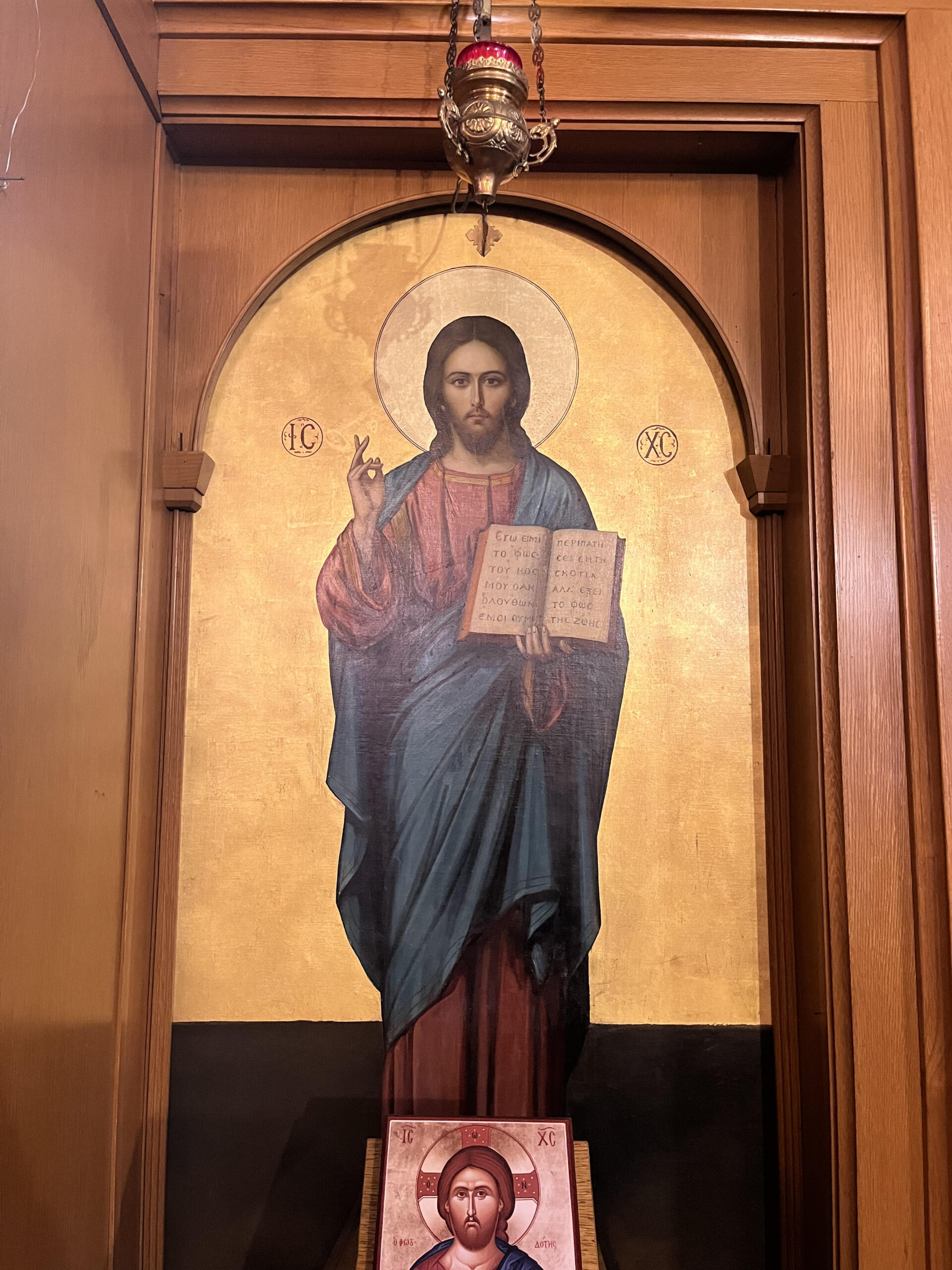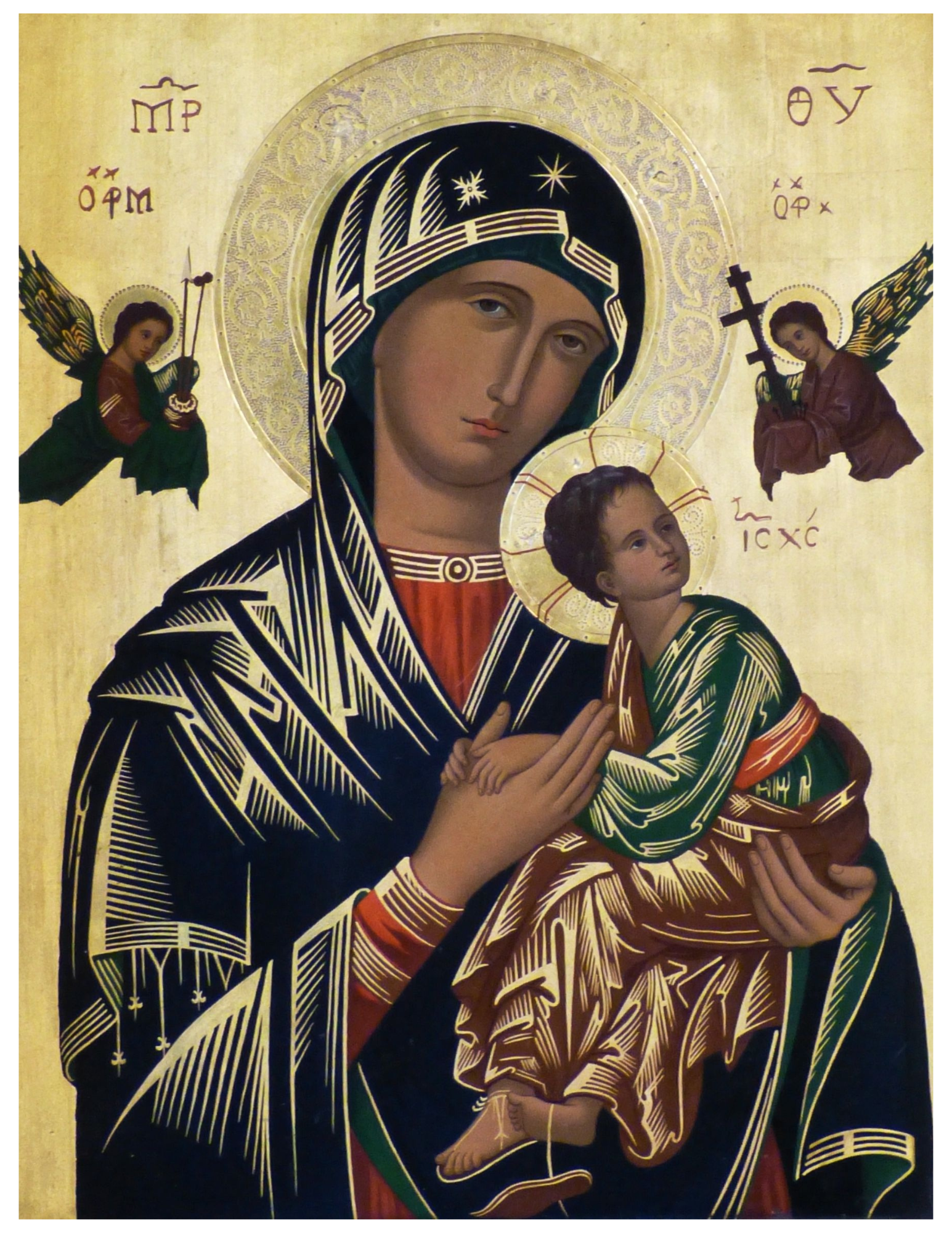Now even the first covenant had regulations for worship and an earthly sanctuary. For a tent was prepared, the outer one, in which were the lampstand and the table and the bread of the Presence; it is called the Holy Place. Behind the second curtain stood a tent called the Holy of Holies, having the golden altar of incense and the ark of the covenant covered on all sides with gold, which contained a golden urn holding the manna, and Aaron’s rod that budded, and the tables of the covenant; above it were the cherubim of glory overshadowing the mercy seat. Of these things we cannot now speak in detail.
These preparations having thus been made, the priests go continually into the outer tent, performing their ritual duties; but into the second only the high priest goes, and he but once a year, and not without taking blood which he offers for himself and for the errors of the people.
Hebrews 9: 1-7
One of the neat things about being Orthodox is that our “Traditions” go back not only to the early centuries of Christianity, but in some cases even before the time of Christ. Take for instance, the setup of the temple. We read about the setup of the temple in Exodus and it is also referenced in today’s Epistle from Hebrews. If you read this carefully, you’ll see how many things from the Temple are still in place in our church.
As with the first covenant, we have regulations for our worship and our earthly sanctuary. The Divine Liturgy is celebrated in the same way across the entire planet and has been for centuries. Our earthly sanctuaries, our churches, are also set up in a traditional manner-they face east, they have domes, icon screens, icons, and other liturgical appointments.
We have “two tents” – the part of the sanctuary where the laity gather – the narthex, the nave and the solea. We have lampstands and tables.
And there is the altar itself, where only the priests (and altar boys) go. In the altar is the Holy Table, elaborately created of wood or marble. There is incense burning throughout the services. There is a tabernacle which contains the “New Covenant,” the Body and Blood of Christ. It is usually made of gold or silver. The “manna,” which was the bread from heaven which sustained the Israelites in the wilderness, has been replaced by the “bread of life,” Holy Communion, which sustains God’s people today.
Around the altar are representations of the Cherubim, the round discs that are carried in procession by the altar boys.
There are the differences in worship between then and now. The “second tent,” the Holy Altar, is no longer covered by a curtain during the services. The priest enters the Holy of Holies for every service, and during each service, people have a visual view into the altar. The priest no longer takes blood, offering it for himself and the errors of the people. The priest takes bread and wine and offers a “bloodless sacrifice.” The Gifts become the Body and Blood of Christ, and they are offered to the people in order that we may be cleansed of sin.
I am inspired by today’s reading because it gives legitimacy to the way we worship. We worship not only as they did in the early centuries of Christianity, but the way worship was done in the Old Testament, centuries before Christ.
Let the heavens sing for joy, and let everything on earth be glad. For with His arm the Lord has worked power. He trampled death under foot by means of death; and He became the firstborn from the dead. From the maw of Hades He delivered us; and He granted the world His great mercy. (Resurrectional Apolytikion, Third Tone, Trans. by Fr. Seraphim Dedes)
Plan to attend the Divine Liturgy tomorrow, and as you look around at the appointments in the church, reflect on how timeless they really are!

